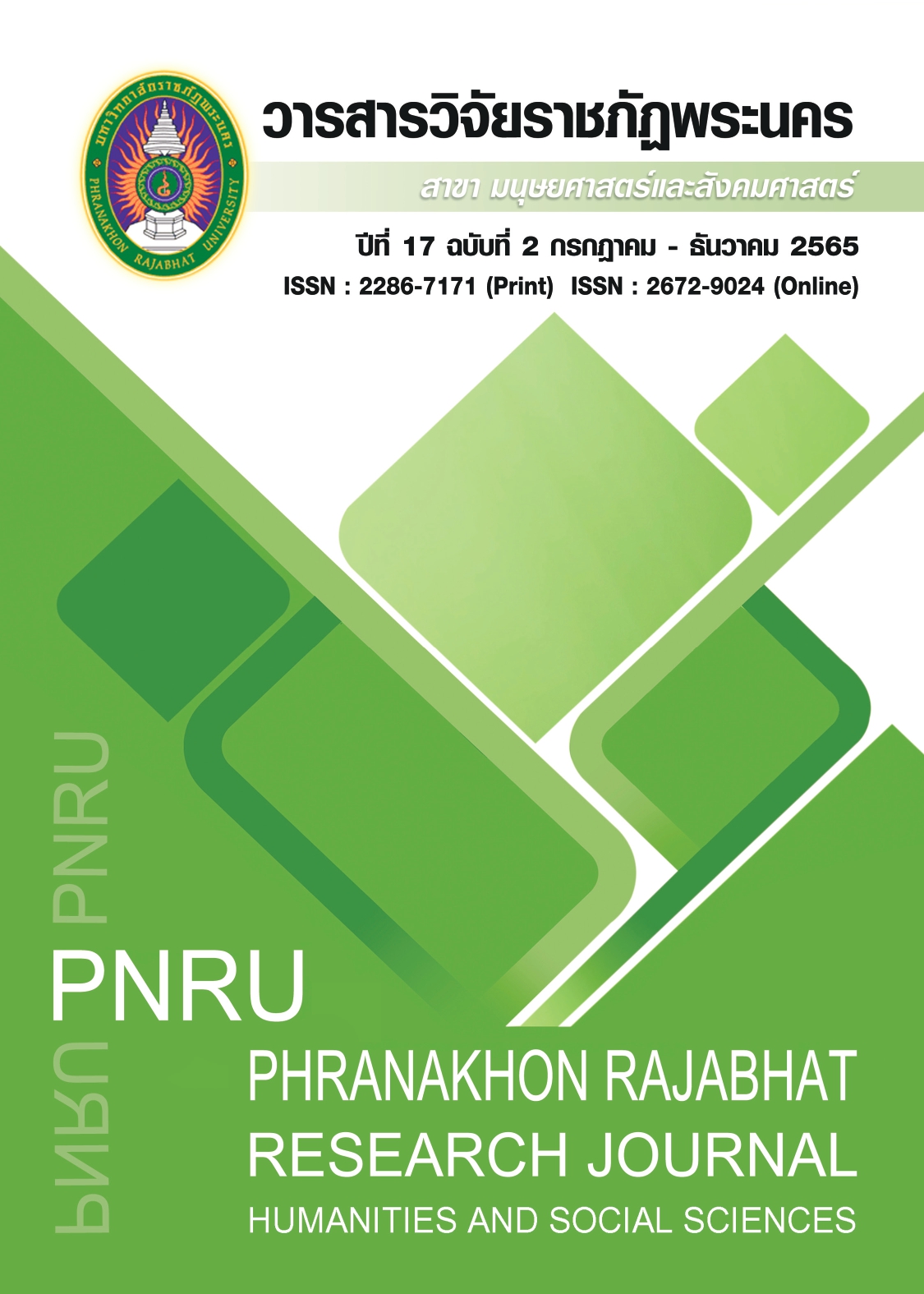THE IDENTITY OF LAI-RUE-FAI AT RASRI-SALAI, SISAKET PROVINCE
Main Article Content
Abstract
There are two objectives that belong to the identity of the Illuminated Boat Procession (Lai Ruea Fai) of RasiSalai District, Sisaket Province as follows: 1. To study the history of the Illuminated Boat Procession of RasiSalai District, Sisaket Province.
2. To study the events of the Illuminated Boat based on qualitative research.
The study results found that the Illuminated Boat Procession was held by people in Sompoi subdistrict on the occasion of “Hitboon Khao Phansa (Buddhist Lent),” which was inherited as an intangible heritage. The ceremony is divided into three periods: the first period is in the morning, the second period is from midday to afternoon, and the third period is in the evening, at the end of Buddhist Lent. In each period, many behaviors represent the intellectual identity of the Sompoi subdistrict people, such as presenting black or red sticky rice to others, blowing the Snai(Buffalo horn), and the Ghosts eating flags, etc. Although some activities are made light or terminated with time, now, a group of the new young generation who are interested in, love, and cherish the intangible cultural heritage are trying to pull back and hold on to Sompoi subdistrict’s Illuminated Boat Procession to firmly protect cultural art and prevent cultural deterioration.
Article Details

This work is licensed under a Creative Commons Attribution-NonCommercial-NoDerivatives 4.0 International License.
Each publish articles were copyright by Phranakorn Rajabhat University
Any contents which appeared in each articles in the journal were authors personal opinion. It did not relate to Phranakorn Rajabhat University and other instructors in the university. Each authors would take responsibility on their articles. If there are any mistake, the authors will take responsibility themselves
References
Boonsong, K., Dhamabuttra, P., Pooripakdee, S., & Tungbenchasiriku, S. (2021). Strategic plan for integrated sustainable tourism development in Sisaket province. Journal of MCU Social Science Review, 10(2), 308-322.
Phrachonyanmuni., & Wongsaard, S. (2020). Buddhism and belief. Journal of Palisueksabuddhaghosa Review, 6(2), 99-115.
Promdee, W. (2021). Lai Rue Fai Festival [Image]. Retrieved from
https://www.facebook.com/100001819522388/videos/pcb.6225817254155530/1006655073240821. [2021, 15 Dec.]
Mahongchai, O. (2021). Lai Rue Fai Festival [Image]. Retrieved from
https://www.facebook.com/photo.php?fbid=4407274392654706&set=pb.100001165658842.-2207520000.&type=3. [2021, 15 Dec.]
Office of the National Cultural Commission Ministry of Education. (2008). Thai life, Bhucha Pra-ya-Than. (3rd ed.). Bangkok: The Agricultural Co-operative Federation of Thailand.
Sreetarrung, K. (2005). The cultural history of Loei: a case study of Wat Huay Hao Amphoe Muang Changwat Loei. Master’s of arts in Thai Study For Development, Loei Rajabhat University.
Thomas, N. (1992). The Inversion of Tradition. American Ethnologist, 19(2), 213-232.


